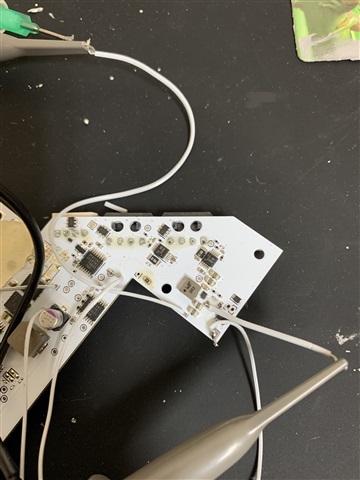Other Parts Discussed in Thread: TPS562207S
Hi, I'm using the TPS562202SDRLR in a new design. During my initial board bringup, I'm seeing some very strange behavior--I'm seeing 60-100mV ripple, which is much larger than the specced ripple for this part and twice as high as the webench simulator thinks I should be seeing. I'm running this circuit with 12V input and 3.3V output. I believe, based on webench, I'm probably drawing 33mA, since I am seeing a ~28kHz output oscillation.
Webench thinks I should be seeing 35mV p/p, but I'm seeing 60mV instead.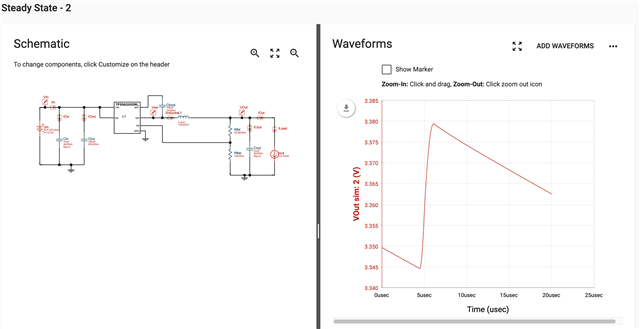
Here's the scoped output of the regulator:
I am pretty sure it's the regulator causing the oscillation, as here are waveforms from the bench supply terminal (first) and the bench supply at the board connections (second): 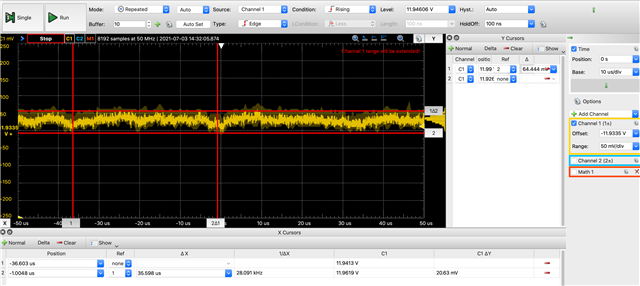
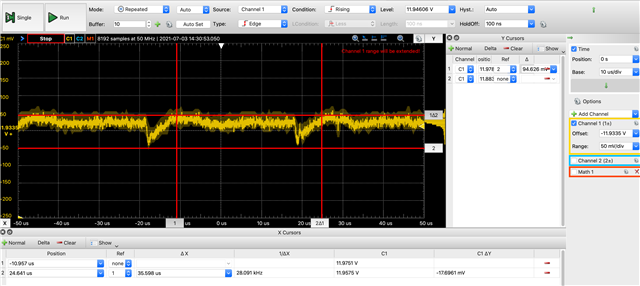
Here's my board layout & schematic. The only deviation I made from the reference design is that I used this wuerth inductor. The board is 4 layers, and there's no 3rd layer plane (magenta) underneath the device. The 2nd (yellow) and 4th layer (green) and ground. The top layer is red.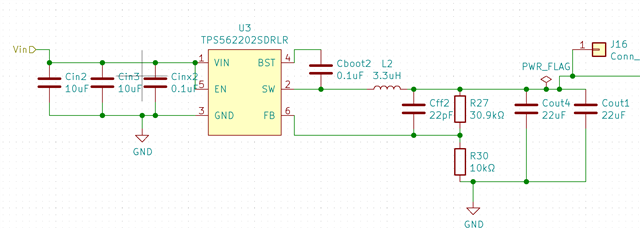
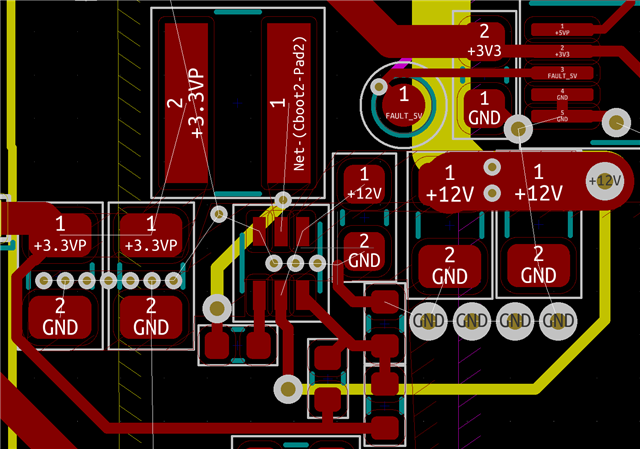

I believe this part is producing a much less stable output than I'd expect. I'd like advice as to whether there are component values I should change, manufacturability issues I could be encountering, or if this behavior is within spec. Thank you.



